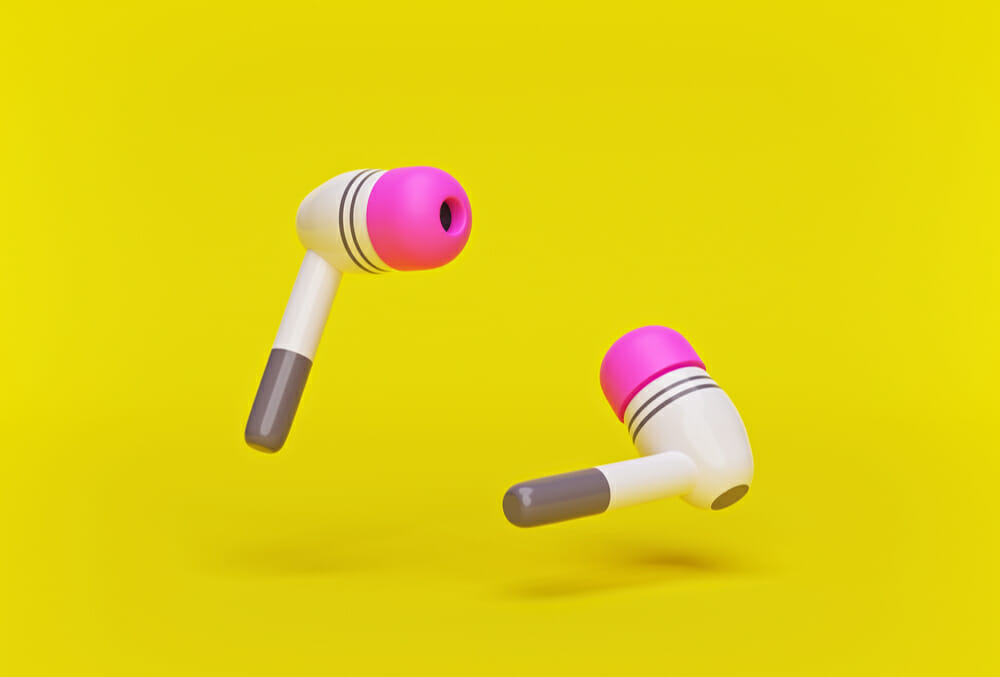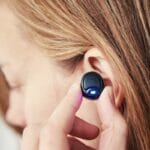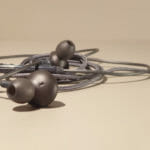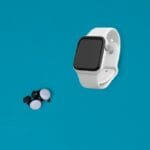An intense workout at the gym, a long bus journey, a big cleaning spree, or a walk to the shops. Whatever you use headphones for, it’s important to select the right pair for you.
Many people don’t like to put anything inside their ears and may worry about experiencing discomfort while listening to music.

Comfort and quality are paramount for enhancing the enjoyment of your private music sessions, and many listeners opt for in-ear headphones to play their favourite tunes, once they’ve found the right type of earphones for them.
What Are The Different Types Of In-Ear Headphones?
However, there is some confusion between the different types of in-ear headphones available. Referred to as in-ear headphones, earphones, or interaural headphones, the two main types you can purchase are called earbuds and canal phones (see also ‘Is It Illegal To Drive With Headphones?‘).
The two types of earphones feature different housing designs and ear fits, and the type of fit you choose may impact your comfort level when using them.
Canal Phones
Canal phones, also known as in-ear monitors or in-ear canal phones, have tips that fit straight into the ear canal. Direct insertion into the ear canal makes for enhanced noise cancellation capabilities but may be more uncomfortable for some people.
The tips are also universally sized and can be either deeply inserted or shallowly inserted depending on preference. It’s very important for these types of in-ear headphones to have an airtight seal between the tip and the ear canal.
Earbuds
Earbuds, the second type of in-ear headphones, don’t feature the same ear tips or nozzles found on canal phones. Because earbuds don’t have the airtight seal provided by the tips, noise cancellation is less effective. This means that the bass will be of lower quality than standard canal phones.
However, earbuds can be much more practical in terms of usability. They’re more portable, can support Bluetooth, and usually come with a charging carry case. They’re also placed just outside of the ear canal, which means some listeners may find them more comfortable during long music sessions.
Putting your little finger lightly into your ear canal is a good way to see how earbuds feel in your ear.
Earbuds can come with a short wire, or they can be completely wireless. Wireless headphones have an excellent feature: they remove the need for those annoying wires, which can turn into a tangled mess at the bottom of your bag.
Wireless Bluetooth headphones are also fantastic for listening to music while exercising, as running on a treadmill with a wire attached to your device can become bothersome.
The Bluetooth feature allows you to connect with music playlists on your phone with ease on the go, and many headphones have inbuilt control buttons which you can touch to change, shuffle or pause and play songs.
You can purchase affordable earbuds through smaller companies, however, large corporations like Apple and Samsung offer the most feature-packed products to further enhance the music listening experience.
Often referred to as wearables or smart headphones, earbuds from these companies come with lots of extras, many of which are fitness-related. Some of these extras include heart tracking, oxygen and distance monitoring, calorie counting, and connectivity with other devices such as Amazon’s Alexa.
Some listeners may not require all of these features and might therefore opt for a cheaper alternative, but it depends on what you use headphones for. If you’re a seasoned music listener and exercise fanatic, it might make sense to invest in some wireless Bluetooth headphones.
How To Get The Best Out Of Your Headphones
Depending on which type of in-ear headphones you have, there are methods to adjust them, improving both comfort and music quality. First, you want to make sure that the cable isn’t tangled or creating microphonics, which is cable noise caused by the cable rubbing against objects or clothes.
Also, using the right-sized ear tips is important to ensure comfort and sound quality, so it may be worth trying out different sizes until you find the one that’s right for you. Many headphones come with multiple tips in different sizes, but you can also buy them separately if required.
If you are opting for canal phones, make sure to adjust the tip or nozzle to secure the best fit and optimum seal. Signs of a bad fit may include a tinny sound, lack of bass, ineffective stereo imaging, or the feeling that the music is distant. Also, if you can hear noises from around you well, then you don’t have a good fit.
Whether you decide to opt for canal phones or earbuds, it’s important to read the specifications carefully before purchasing to ensure that the headphones include the features, sound quality, and level of comfort that you need.
Earphones have varied designs and therefore support different configurations, so to achieve the best performance it is best to spend some time experimenting with different setups and fits.
- Are Wired Headphones Safer Than Bluetooth? A Friendly Guide - January 8, 2024
- Can Fitbit Versa 3 Answer Calls? A Quick Guide for Users - January 7, 2024
- Can Fitbit Versa 2 Answer Calls? Find Out Here - January 7, 2024






